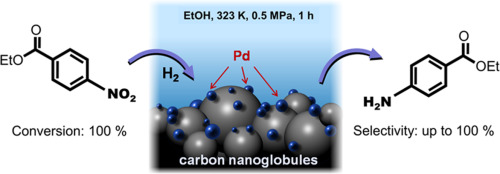What are the Uses of Nickel Compounds in Modern Industries?
Nowadays, nickel metal is the most important form of nickel in terms of quantity, but nickel compounds also have key uses. Although the importance of nickel compounds has not been widely recognized, substances derived from nickel have been used in many industries and are crucial to the daily production of countless products.
Nickel compounds in the catalyst
Catalysts are essential in chemical production because they allow reactions to occur more quickly at lower temperatures and pressures, which can save energy and improve efficiency. Industrial catalysts are often metal or metal compounds that catalyze specific chemical reactions through their intrinsic properties. Metals used in catalysts include nickel, copper, cobalt, molybdenum, and platinum. The production of fuel, fertilizer and fine chemicals requires catalyzing specific process steps with nickel-based catalysts.
Catalysts are designed for specific processes. For example, nickel catalysts play an important role in the core process of "Steam Reforming", which is the main industrial hydrogen production process. Hydrogen is mainly used in refineries and is essential for the production of clean fuels, and another important catalytic process for nickel compounds and other metal catalysts is hydrogenation.

Nickel compounds in pigments, frits, and glazes
Nickel oxide is used as raw material in the production of inorganic pigments and frits, which are also used in the production of glaze and enamel. Nickel oxide is also used as a coloring agent to improve the adhesion of bottom coated glaze, which is used to decorate and protect finished surfaces such as tableware, floor tiles, wall tiles, art ceramics and enameled steel. Besides that, in some inorganic pigments, nickel oxide can be used to form unique colors and fine colors that cannot be obtained in other ways.
Nickel compounds in glassware production
Nickel oxide is used in the production of certain types of glass, including crystal glass, dark blue glass and lens glass. In sunglasses, nickel is used as a coloring agent, which gives the lenses brown color to absorb sunlight and protect the eyes from UV radiation. A small amount of nickel oxide is used to create a purple hue for some crystalline glass products. When used in large quantities, nickel compounds give the glass a range of specific colors, from pale grey to blue, purple and even black, depending on the concentration of nickel.
A professional use of nickel oxide is in the production of fluorescent lamp black light blue glass (BLB). The BLB light bulb is a kind of fluorescent tube, which emits long wave ultraviolet radiation, and is used for the detection and analysis of archaeology, banknote inspection, forensic medicine, food industry, medicine, mineralogy, stamp collecting and other fields.
Nickel compounds in batteries
Several nickel compounds and metal nickel are used in the production of various rechargeable batteries, including nickel cadmium (Ni-cd), nickel metal hydride (NiMH) and most Li-ion batteries.
Our phones, laptops, and tablets are powered by rechargeable batteries, and NiMH and lithium-ion batteries are commonly used in such mobile devices, while lithium-ion batteries are also used in electric cars, hybrid cars, energy storage devices and satellites. The Ni-cd battery is known for its high reliability, long life and strong performance, which is the preferred option for important and efficient emergency backup systems, such as those in hospitals, aircraft, and trains.
The batteries will be recycled at the end of their life, and the nickel compounds extracted in the process will be used as secondary materials for new batteries and other industrial products. Flexible battery-based power solutions will play an increasingly important role in the future as the demand for lighter, more autonomous, and more durable devices grow. Nickel will still play a key role in battery technology in the future.



